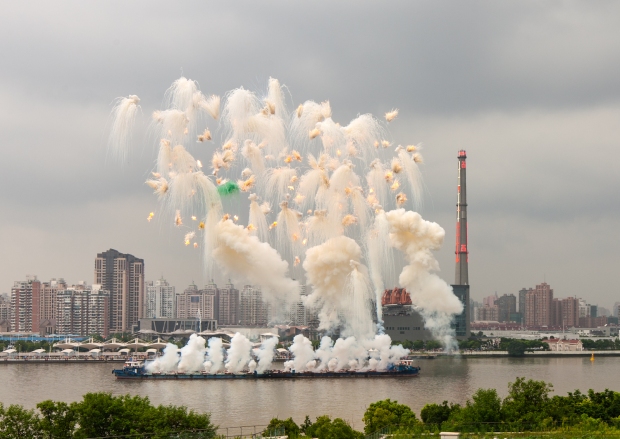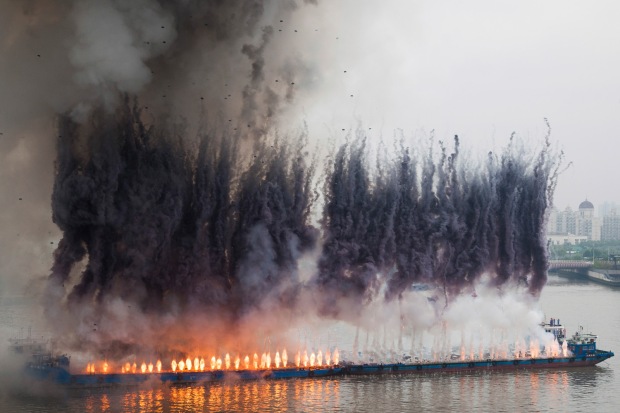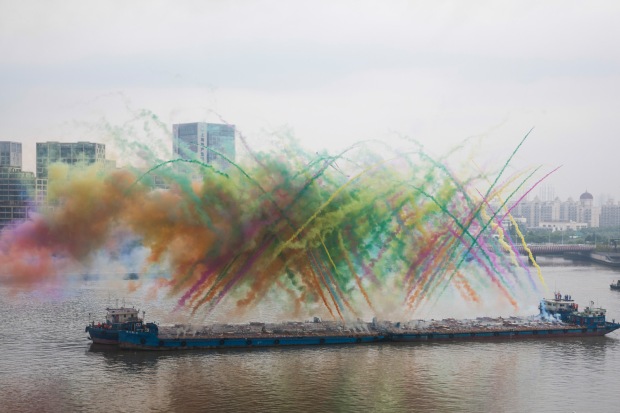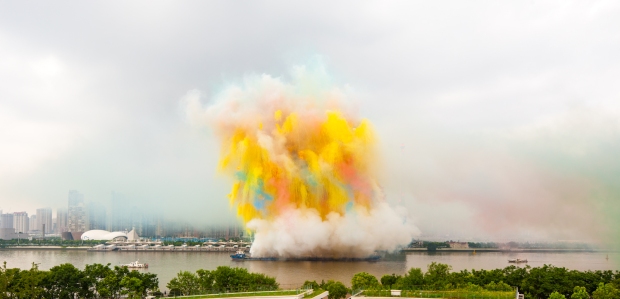Cai Guo-Qiang
Cai Guo-Qiang was born in 1957 in Quanzhou City, Fujian Province, China. He initially studied stage design at the Shanghai Drama institute, but in his early twenties he began experimenting with different kinds of art. He works in a variety of mediums, fire, smoke, gunpowder, drawing, installations, video, performace... Qiang blends his knowledge of science, mastery of art and thoughtful perspective on the world to his art pieces. He uses his abilities as an artist to bring attention to and explore different cultural, political, historical and philosophical inquiries."Drawing freely from ancient mythology, military history, Taoist cosmology, extraterrestrial observations, Maoist revolutionary tactics, Buddhist philosophy, gunpowder-related technology, Chinese medicine, and methods of terrorist violence, Cai’s art is a form of social energy, constantly mutable, linking what he refers to as 'the seen and unseen worlds.' This retrospective presents the full spectrum of the artist’s protean, multimedia art in all its conceptual complexity."
“My work is sometimes like the poppy flower. It has this almost romantic side, but yet it also represents a poison”

Focus: humanity's relationship to nature, and what we struggle with and how we struggle
A reminder to appreciate our place in the world more.
(part of his Falling Back to Earth project)
CGQ: "The title of the exhibition Falling Back to Earth conjures a sense of yearning for the spirit expressed in Chinese literati paintings of earlier times, when people lived humbly and in harmony with nature, an ideal that stands in opposition to the way in which people interact with nature now."




CGQ: "Growing up, I saw how figurative paintings depicting human subjects—either political leaders or soldiers at war—were used as tools for propaganda, and have thus avoided portraying people in my work. To tell stories, I often use animals as a metaphor for human behaviour. Animals are more natural, more spontaneously expressive than humans, and they can be more easily integrated into exhibition spaces and themes."



Elegy, chapter one of Elegy: Explosion Event for the Opening of Cai Guo-Qiang: The Ninth Wave, realized on the riverfront of the Power Station of Art, 5:00 p.m., approximately 8 minutes
Photo by Zhang Feiyu, courtesy Cai Studio
Like an exhale or a "mournful sigh"
Like an exhale or a "mournful sigh"

Remembrance, chapter two of Elegy: Explosion Event for the Opening of Cai Guo-Qiang: The Ninth Wave, realized on the riverfront of the Power Station of Art, 5:00 p.m., approximately 8 minutes.

Consolation, chapter three of Elegy: Explosion Event for the Opening of Cai Guo-Qiang: The Ninth Wave, realized on the riverfront of the Power Station of Art, 5:00 p.m., approximately 8 minutes Photo by Zhang Feiyu, courtesy Cai Studio

Corcovado and Fantasia
smoke drawing
CGQ: "There are also two doctrines I embrace in Daoist philosophy: “no law is the law”, and “leveraging others’ power to exert your own strength”. In Confucianism, tolerance is a value that has taught me not to exclude others, and to learn from and work with people of different cultures; it enables me to find new possibilities in art. These underlying principles are the most valuable lessons I have learned from Eastern philosophy, and they are more important to me than superficial symbols (such as dragons), or even gunpowder as a choice of artistic medium."
Fallen Blossoms: Explosion Project, 2009 (Gunpowder fuse, metal net for gunpowder fuse, scaffolding)
The Ninth Wave - referencing the dead floating pigs in the Huangpu River last year due to extreme air pollution
Cai Guo-Qiang and volunteers rushing in to put out flames from ignition of gunpowder drawing Sentinels of the Enchanted Valley, Galpón de la Boca, Buenos Aires, 2014. Photo by Wen-You Cai, courtesy Cai Studio.



No comments:
Post a Comment